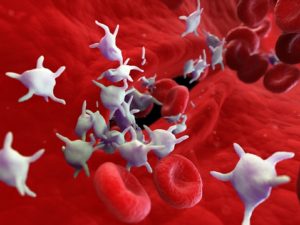The U.S. Food and Drug Administration (FDA) has issued final guidance to reduce bacterial contamination of platelets stored at room temperature; the recommendations must be implemented within 18 months. The current rate of septic transfusion reactions is approximately 1/10,000 despite numerous safety measures. The FDA will now require additional safety measures beyond a primary bacterial culture. Platelets collected by apheresis may be pathogen reduced or undergo either secondary culture or secondary rapid testing after the primary culture. Alternatively, large volume delayed sampling of platelets collected by apheresis can be cultured no sooner than 36 hours. Pre-storage pools of whole blood-derived platelets have similar testing requirements for secondary cultures or rapid testing after the primary culture, or a large volume delayed sampling cultured no sooner than 36 hours. Guidance for single units of whole blood-derived platelets, which are constrained by volume, require either rapid testing or primary cultures. The guidance also outlines conditions for extending platelet storage up to 7 days.
Learn More: BBGuy Podcast: FDA Platelet Bacteria Guidance with Pat Kopko
Reference:

